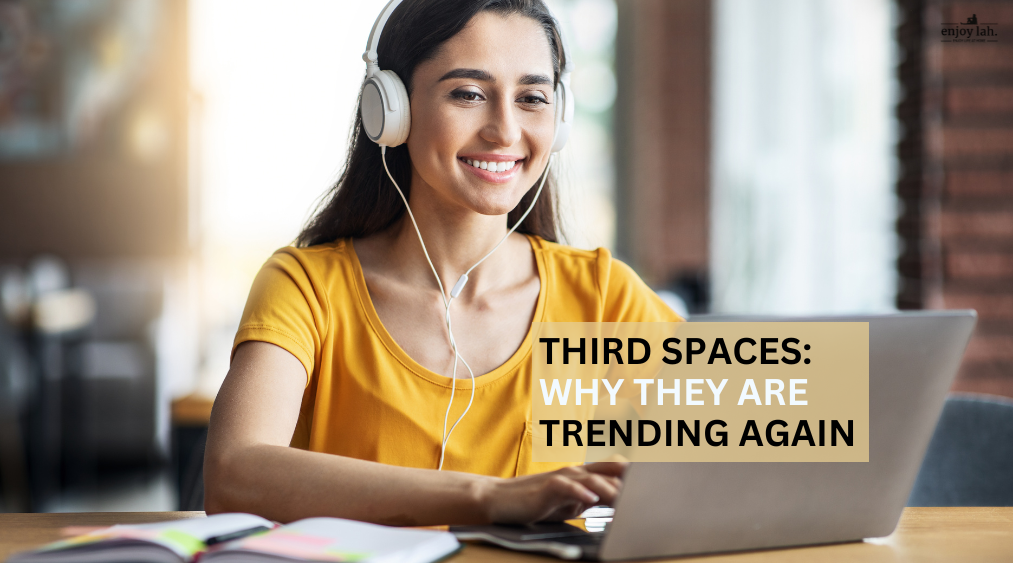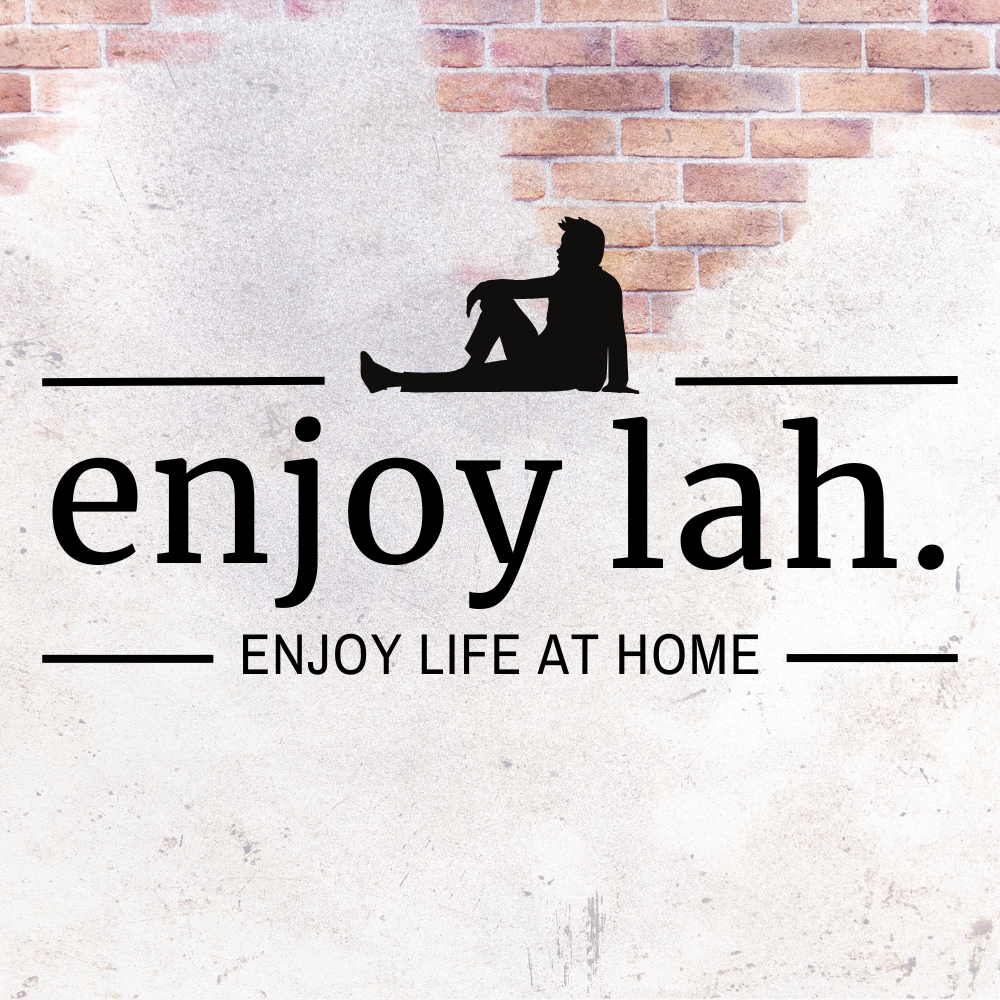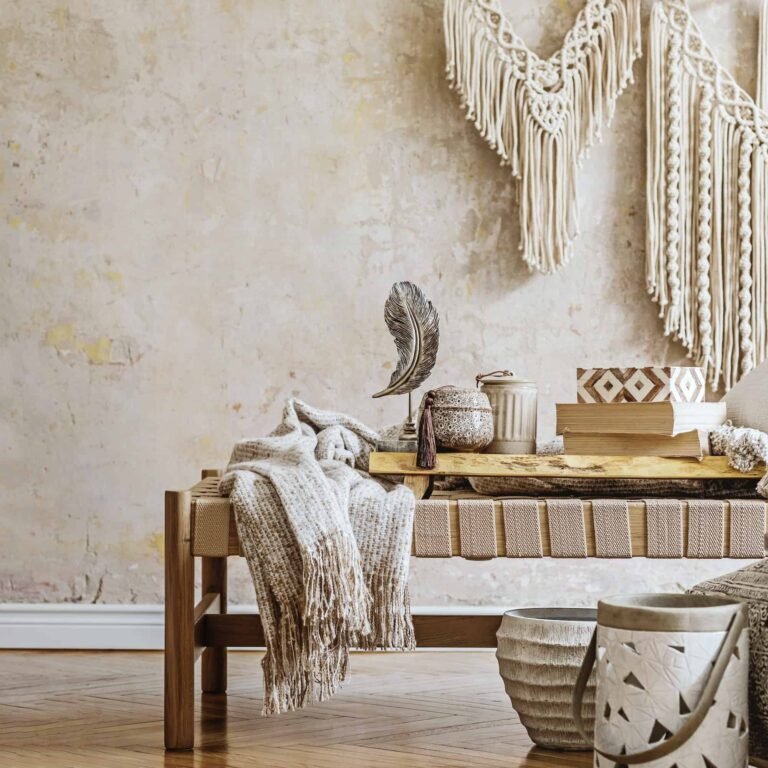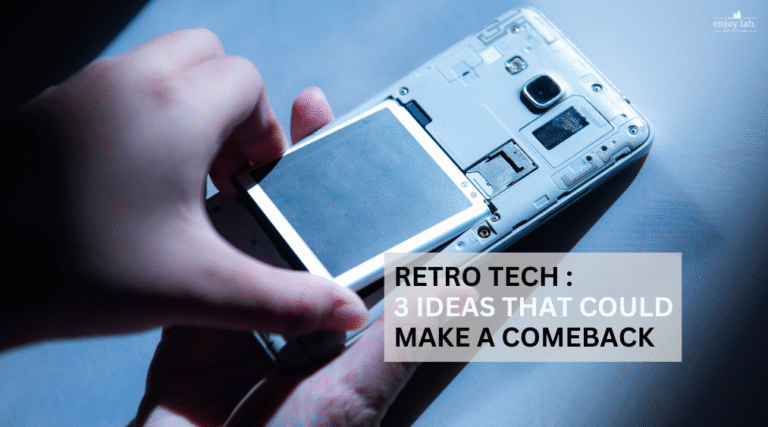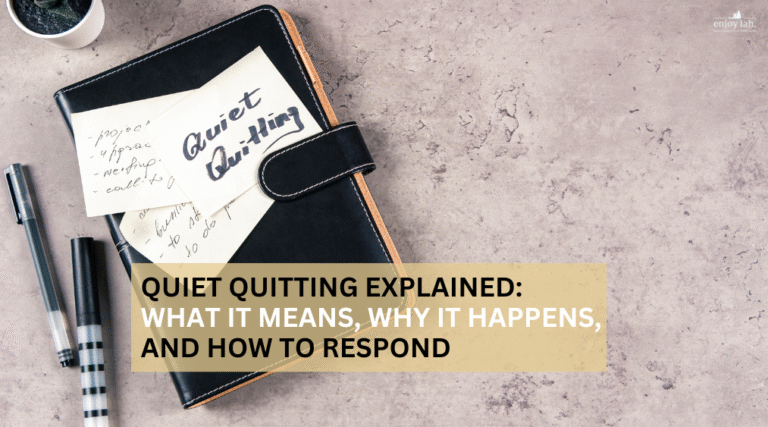Third spaces are trending again, and here’s why you might need one. A third space may be the corner, the space, and the “personal sanctuary” choice where you retreat to get focused or to feel comfort and safety.
If you’ve ever enjoyed your catchup coffee at a quiet café corner, or found comfort in your neighbourhood park, you’ve probably experienced one—without even knowing what it’s called.
Third spaces are not your home or office. They’re casual, accessible places where we go not because we have to but because we want to. In this part of the world, third spaces have always existed in familiar forms—from the local kopitiam to the co-working spaces.
But in recent years, especially post-pandemic, they’ve taken on new meaning for those of us juggling modern life, caregiving, work stress, and a deep yearning just to retreat and breathe.
And that’s why third spaces are trending again.
What Are Third Spaces, Really?
The term “third space” was coined by sociologist Ray Oldenburg to describe social environments that are not your home (first space) or your workplace (second space). These spaces are where informal gatherings happen, you bump into someone unexpectedly, or you sit quietly with your thoughts without needing to perform any role.
Think of them as social living spaces. A quiet corner in a library. A garden café tucked behind a row of shophouses. A pottery studio where strangers become friends after six weeks of making imperfect bowls. Or even attending exhibitions!
These places ask nothing of us, yet give so much in return.
Why Are Third Spaces trending?
The so-called “work space” has evolved over the years. The horrible pandemic gave this a huge push. Thus, as time goes by, our relationship with space has also changed. The pandemic blurred boundaries between work and home, turning bedrooms into offices and kitchens into conference rooms.
It is clear that we now seek greater flexibility when coming to work or socializing. But this new norm also brought about a new type of fatigue. For instance, some of my colleagues suffered from work-from-home fatigue and have preferred to work and discuss in a café at times.
This is where third spaces offered a compelling option, offering neutral ground for people to reconnect, reset, and rediscover themselves. Cafés are no longer just places for food; they’ve become community hubs. Co-working areas and even our airport spaces are becoming popular.
The trend is clear: people need places where they can just be, away from domestic chores and professional pressure.

In the aftermath of the global pandemic and rise of hybrid work culture, many have realized just how important physical (and digital) spaces of rest and reconnection are. When your living room becomes your office, your original space for retreat is no longer sacred. Cue the search for in-between spaces.
The Emotional Pull:
- 🌱 For Mental Wellness: Third spaces provide an outlet to unplug and decompress—no performance, no deadlines.
- 🤝 For Community: These spaces nurture casual, low-pressure interactions that rebuild our social muscles after years of isolation.
- 🧭 For Identity: Especially among younger adults, third spaces offer safe ground for self-expression, creativity, and purpose.
Third Spaces Mean Different Things to Different Generations
While the core function of third spaces remains the same, their form and function often reflect generational needs and lifestyle stages.
Younger adults’ demand for third spaces is very different from what we older folk need. For example, according to research, Gen Z, having grown up in a hyper-digital world, ironically craves meaningful in-person connections—but on their own terms. Unlike the older generations who defaulted to cafes or restaurants, they gravitate toward “third spaces” that blend socializing with immersive experiences, from gaming lounges to live-event venues.
For them, it’s less about passive consumption and more about active participation in communities where they feel a sense of belonging. These areas become hubs for shared identity, whether through niche hobbies, collaborative art, or simply being around peers who “get it.”
For the older generation, like Gen X, who are often caregivers or at the peak of demanding careers, third spaces can be a form of quiet protest. It’s about retreating from noise. Many tend to prefer solace in tranquil places: a secluded library, a nature trail, or a quiet hobby space.

Personally, as an X-Men and very much a digital person, I am quite flexible when it comes to the choice of third spaces. I have to admit, I do like to have quiet conversations with friends or partners. The space ideally is not too noisy for us to catch up or share ideas.
Interestingly, in recent times, my preference has been to attend exhibitions (whether they are art or tech) with friends. At exhibitions, we can learn, interact with, and network with many people who come from different walks of life. I always feel refreshed and motivated after these exhibitions!
The Growing Demand of Third Spaces
The demand for third spaces is particularly strong among younger generations, with Gen Z and Millennials prioritizing experiences over material ownership. For them, third spaces are essential for mental well-being, creativity, and combating the loneliness epidemic exacerbated by remote work and social media.
The good news is that businesses and developers are taking notice and reshaping urban design to accommodate this shift. Traditional retail and office spaces are being reimagined as multi-functional social hubs, blending work, leisure, and community.
For example, in recent news, Projects like Geneo by CapitaLand at Singapore Science Park boast stunning cathedral-like architecture that hints at the future of third spaces: flexible, tech-enabled, and human-centric. The project looks to exemplify this trend, integrating working zones and event spaces into a single ecosystem.
Why You Might Need a Third Space Now More Than Ever
If you’re in your 30s, 40s, or 50s and living in a fast-paced city, chances are your days are tightly scheduled. Between meetings, errands, and screen time, the hours blur. You’re grateful for what you have, but you also feel stretched.
This is where the third spaces offer something priceless: a different perspective.
It invites you to step out of the daily loop and enter a different zone of possibility, where ideas can flow differently, your brain relaxes, and small talk can lead to big insights.
In a time when there is digital disruption, and we always feel like “chasing” all the times, we need the third spaces more than ever. Hence, third spaces are excellent option to unlock the mind.
What’s Your Third Spaces?
The beauty of third spaces is that they look different for everyone, but the benefits are universal. When we feel stuck in our first and second spaces, we can always go out to “touch some grass” by leveraging the third spaces.
So maybe this week, make time for one.
If you need a recommendation for a quiet catch-up or small meeting in Singapore, I really like the Rail Mall area. Maybe we will make a list for areas in Johor Bahru in the future.
And if you do find something beautiful, tell us about it. Share your third space with us using #MyThirdSpaceLah on Instagram or Facebook.
Who knows? Your story might just inspire someone else to carve out a little room in their life—for peace, for joy, and for themselves.

